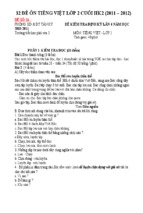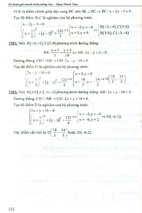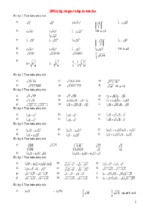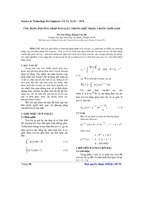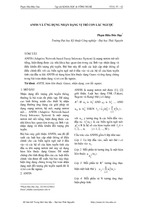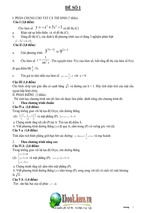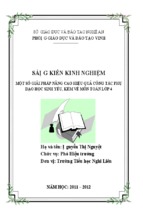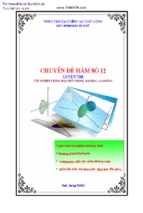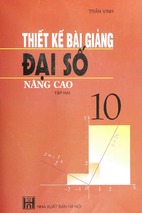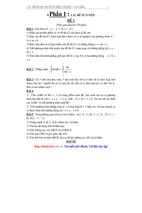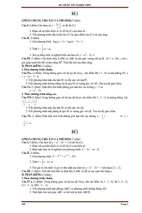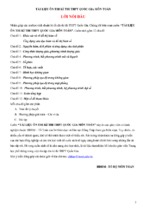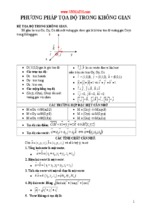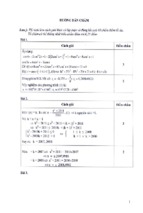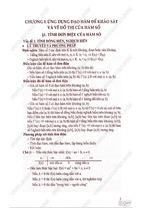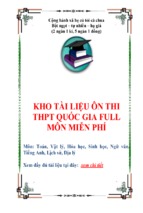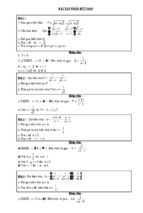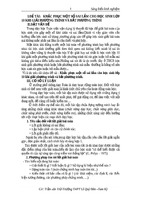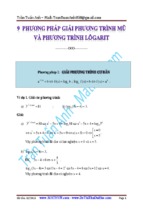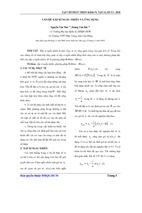Tobias
Dantzig
NUMBER
The Language of Science
Edited by
Joseph Mazur
Foreword by
Barry Mazur
The Masterpiece Science Edition
Pi Press
New York
PI PRESS
An imprint of Pearson Education, Inc.
1185 Avenue of the Americas, New York, New York 10036
Foreword, Notes, Afterword and Further Readings © 2005 by Pearson
Education, Inc.© 1930, 1933, 1939, and 1954 by the Macmillan
Company
This edition is a republication of the 4th edition of Number, originally
published by Scribner, an Imprint of Simon & Schuster Inc.
Pi Press offers discounts for bulk purchases. For more information,
please contact U.S. Corporate and Government Sales, 1-800-382-3419,
[email protected]. For sales outside the U.S., please
contact International Sales at
[email protected].
Company and product names mentioned herein are the trademarks or
registered trademarks of their respective owners.
Printed in the United States of America
First Printing: March, 2005
Library of Congress Number: 2004113654
Pi Press books are listed at www.pipress.net.
ISBN 0-13-185627-8
Pearson Education LTD.
Pearson Education Australia PTY, Limited.
Pearson Education Singapore, Pte. Ltd.
Pearson Education North Asia, Ltd.
Pearson Education Canada, Ltd.
Pearson Educatión de Mexico, S.A. de C.V.
Pearson Education—Japan
Pearson Education Malaysia, Pte. Ltd.
Contents
Foreword
vii
Editor's Note
xiv
Preface to the Fourth Edition
xv
Preface to the First Edition
1.
Fingerprints
xvii
1
2. The Empty Column
19
3.
Number-lore
37
4. The Last Number
59
5.
79
Symbols
6. The Unutterable
103
7.
This Flowing World
125
8.
The Art of Becoming
145
9.
Filling the Gaps
171
10. The Domain of Number
187
11. The Anatomy of the Infinite
215
12.
239
The Two Realities
Contents
vi
Appendix A. On the Recording of Numbers
261
Appendix B. Topics in Integers
277
Appendix C. On Roots and Radicals
303
Appendix D. On Principles and Arguments
327
Afterword
343
Notes
351
Further Readings
373
Index
385
Foreword
T
he book you hold in your hands is a many-stranded meditation on Number, and is an ode to the beauties of mathematics.
This classic is about the evolution of the Number concept. Yes:
Number has had, and will continue to have, an evolution. How did
Number begin? We can only speculate.
Did Number make its initial entry into language as an adjective? Three cows, three days, three miles. Imagine the exhilaration
you would feel if you were the first human to be struck with the
startling thought that a unifying thread binds “three cows” to “three
days,” and that it may be worthwhile to deal with their common
three-ness. This, if it ever occurred to a single person at a single
time, would have been a monumental leap forward, for the disembodied concept of three-ness, the noun three, embraces far more
than cows or days. It would also have set the stage for the comparison to be made between, say, one day and three days, thinking of
the latter duration as triple the former, ushering in yet another
view of three, in its role in the activity of tripling; three embodied,
if you wish, in the verb to triple.
Or perhaps Number emerged from some other route: a form
of incantation, for example, as in the children’s rhyme “One, two,
buckle my shoe….”
However it began, this story is still going on, and Number,
humble Number, is showing itself ever more central to our understanding of what is. The early Pythagoreans must be dancing in
their caves.
viii
NUMBER
If I were someone who had a yen to learn about math, but
never had the time to do so, and if I found myself marooned on
that proverbial “desert island,” the one book I would hope to have
along is, to be honest, a good swimming manual. But the second
book might very well be this one. For Dantzig accomplishes these
essential tasks of scientific exposition: to assume his readers have
no more than a general educated background; to give a clear and
vivid account of material most essential to the story being told; to
tell an important story; and—the task most rarely achieved of all—
to explain ideas and not merely allude to them.
One of the beautiful strands in the story of Number is the
manner in which the concept changed as mathematicians expanded the republic of numbers: from the counting numbers
1, 2, 3,…
to the realm that includes negative numbers, and zero
… –3, –2, –1, 0, +1, +2, +3, …
and then to fractions, real numbers, complex numbers, and, via a
different mode of colonization, to infinity and the hierarchy of
infinities. Dantzig brings out the motivation for each of these augmentations: There is indeed a unity that ties these separate steps
into a single narrative. In the midst of his discussion of the expansion of the number concept, Dantzig quotes Louis XIV. When asked
what the guiding principle was of his international policy, Louis
XIV answered, “Annexation! One can always find a clever lawyer to
vindicate the act.” But Dantzig himself does not relegate anything to
legal counsel. He offers intimate glimpses of mathematical birth
pangs, while constantly focusing on the vital question that hovers
over this story: What does it mean for a mathematical object to
exist? Dantzig, in his comment about the emergence of complex
numbers muses that “For centuries [the concept of complex numbers] figured as a sort of mystic bond between reason and imagination.” He quotes Leibniz to convey this turmoil of the intellect:
Foreword
ix
“[T]he Divine Spirit found a sublime outlet in that wonder of
analysis, that portent of the ideal world, that amphibian between
being and not-being, which we call the imaginary root of negative
unity.” (212)
Dantzig also tells us of his own early moments of perplexity:
“I recall my own emotions: I had just been initiated into the mysteries of the complex number. I remember my bewilderment: here
were magnitudes patently impossible and yet susceptible of
manipulations which lead to concrete results. It was a feeling of
dissatisfaction, of restlessness, a desire to fill these illusory creatures, these empty symbols, with substance. Then I was taught to
interpret these beings in a concrete geometrical way. There came
then an immediate feeling of relief, as though I had solved an
enigma, as though a ghost which had been causing me apprehension turned out to be no ghost at all, but a familiar part of my
environment.” (254)
The interplay between algebra and geometry is one of the
grand themes of mathematics. The magic of high school analytic
geometry that allows you to describe geometrically intriguing
curves by simple algebraic formulas and tease out hidden properties of geometry by solving simple equations has flowered—in
modern mathematics—into a powerful intermingling of algebraic
and geometric intuitions, each fortifying the other. René Descartes
proclaimed: “I would borrow the best of geometry and of algebra
and correct all the faults of the one by the other.” The contemporary mathematician Sir Michael Atiyah, in comparing the glories of
geometric intuition with the extraordinary efficacy of algebraic
methods, wrote recently:
x
NUMBER
“Algebra is the offer made by the devil to the mathematician. The
devil says: I will give you this powerful machine, it will answer any
question you like. All you need to do is give me your soul: give up
geometry and you will have this marvelous machine. (Atiyah, Sir
Michael. Special Article: Mathematics in the 20th Century. Page 7.
Bulletin of the London Mathematical Society, 34 (2002) 1–15.)”
It takes Dantzig’s delicacy to tell of the millennia-long
courtship between arithmetic and geometry without smoothing
out the Faustian edges of this love story.
In Euclid’s Elements of Geometry, we encounter Euclid’s definition of a line: “Definition 2. A line is breadthless length.”
Nowadays, we have other perspectives on that staple of plane
geometry, the straight line. We have the number line, represented
as a horizontal straight line extended infinitely in both directions
on which all numbers—positive, negative, whole, fractional, or
irrational—have their position. Also, to picture time variation, we
call upon that crude model, the timeline, again represented as a
horizontal straight line extended infinitely in both directions, to
stand for the profound, ever-baffling, ever-moving frame of
past/present/futures that we think we live in. The story of how
these different conceptions of straight line negotiate with each
other is yet another strand of Dantzig’s tale.
Dantzig truly comes into his own in his discussion of the relationship between time and mathematics. He contrasts Cantor’s
theory, where infinite processes abound, a theory that he maintains
is “frankly dynamic,” with the theory of Dedekind, which he refers
to as “static.” Nowhere in Dedekind’s definition of real number,
says Dantzig, does Dedekind even “use the word infinite explicitly,
or such words as tend, grow, beyond measure, converge, limit, less
than any assignable quantity, or other substitutes.”
Foreword
xi
At this point, reading Dantzig’s account, we seem to have come
to a resting place, for Dantzig writes:
“So it seems at first glance that here [in Dedekind’s formulation of
real numbers] we have finally achieved a complete emancipation
of the number concept from the yoke of time.” (182)
To be sure, this “complete emancipation” hardly holds up to
Dantzig’s second glance, and the eternal issues regarding time and
its mathematical representation, regarding the continuum and its
relationship to physical time, or to our lived time—problems we
have been made aware of since Zeno—remain constant companions to the account of the evolution of number you will read in this
book.
Dantzig asks: To what extent does the world, the scientific
world, enter crucially as an influence on the mathematical world,
and vice versa?
“The man of science will acts as if this world were an absolute
whole controlled by laws independent of his own thoughts or act;
but whenever he discovers a law of striking simplicity or one of
sweeping universality or one which points to a perfect harmony in
the cosmos, he will be wise to wonder what role his mind has
played in the discovery, and whether the beautiful image he sees in
the pool of eternity reveals the nature of this eternity, or is but a
reflection of his own mind.” (242)
Dantzig writes:
“The mathematician may be compared to a designer of garments,
who is utterly oblivious of the creatures whom his garments may
fit. To be sure, his art originated in the necessity for clothing such
creatures, but this was long ago; to this day a shape will occasionally appear which will fit into the garment as if the garment had
been made for it. Then there is no end of surprise and of delight!”
(240)
xii
NUMBER
This bears some resemblance in tone to the famous essay of the
physicist Eugene Wigner, “The Unreasonable Effectiveness of
Mathematics in the Natural Sciences,” but Dantzig goes on, by
offering us his highly personal notions of subjective reality and
objective reality. Objective reality, according to Dantzig, is an
impressively large receptacle including all the data that humanity
has acquired (e.g., through the application of scientific instruments). He adopts Poincaré’s definition of objective reality, “what
is common to many thinking beings and could be common to all,”
to set the stage for his analysis of the relationship between Number
and objective truth.
Now, in at least one of Immanuel Kant’s reconfigurations of
those two mighty words subject and object, a dominating role is
played by Kant’s delicate concept of the sensus communis. This sensus communis is an inner “general voice,” somehow constructed
within each of us, that gives us our expectations of how the rest of
humanity will judge things.
The objective reality of Poincaré and Dantzig seems to require,
similarly, a kind of inner voice, a faculty residing in us, telling us
something about the rest of humanity: The Poincaré-Dantzig
objective reality is a fundamentally subjective consensus of what is
commonly held, or what could be held, to be objective. This view
already alerts us to an underlying circularity lurking behind many
discussions regarding objectivity and number, and, in particular
behind the sentiments of the essay of Wigner. Dantzig treads
around this lightly.
My brother Joe and I gave our father, Abe, a copy of Number:
The Language of Science as a gift when he was in his early 70s. Abe
had no mathematical education beyond high school, but retained
an ardent love for the algebra he learned there. Once, when we were
quite young, Abe imparted some of the marvels of algebra to us:
“I’ll tell you a secret,” he began, in a conspiratorial voice. He proceeded to tell us how, by making use of the magic power of the
cipher X, we could find that number which when you double it and
Foreword
xiii
add one to it you get 11. I was quite a literal-minded kid and really
thought of X as our family’s secret, until I was disabused of this
attribution in some math class a few years later.
Our gift of Dantzig’s book to Abe was an astounding hit. He
worked through it, blackening the margins with notes, computations, exegeses; he read it over and over again. He engaged with
numbers in the spirit of this book; he tested his own variants of the
Goldbach Conjecture and called them his Goldbach Variations. He
was, in a word, enraptured.
But none of this is surprising, for Dantzig’s book captures both
soul and intellect; it is one of the few great popular expository classics of mathematics truly accessible to everyone.
—Barry Mazur
Editor’s Note to the Masterpiece
Science Edition
T
he text of this edition of Number is based on the fourth edition, which was published in 1954. A new foreword, afterword, endnotes section, and annotated bibliography are
included in this edition, and the original illustrations have been
redrawn.
The fourth edition was divided into two parts. Part 1,
“Evolution of the Number Concept,” comprised the 12 chapters
that make up the text of this edition. Part 2, “Problems Old and
New,” was more technical and dealt with specific concepts in depth.
Both parts have been retained in this edition, only Part 2 is now set
off from the text as appendixes, and the “part” label has been
dropped from both sections.
In Part 2, Dantzig’s writing became less descriptive and more
symbolic, dealing less with ideas and more with methods, permitting him to present technical detail in a more concise form. Here,
there seemed to be no need for endnotes or further commentaries.
One might expect that a half-century of advancement in mathematics would force some changes to a section called “Problems Old
and New,” but the title is misleading; the problems of this section
are not old or new, but are a collection of classic ideas chosen by
Dantzig to show how mathematics is done.
In the previous editions of Number, sections were numbered
within chapters. Because this numbering scheme served no function other than to indicate a break in thought from the previous
paragraphs, the section numbers were deleted and replaced by a
single line space.
Preface to the Fourth Edition
quarter of the century ago, when this book was first written, I had grounds to regard the work as a pioneering
effort, inasmuch as the evolution of the number concept—
though a subject of lively discussion among professional mathematicians, logicians and philosophers—had not yet been presented to the general public as a cultural issue. Indeed, it was by
no means certain at the time that there were enough lay readers
interested in such issues to justify the publication of the book.
The reception accorded to the work both here and abroad, and
the numerous books on the same general theme which have followed in its wake have dispelled these doubts. The existence of a
sizable body of readers who are concerned with the cultural
aspects of mathematics and of the sciences which lean on mathematics is today a matter of record.
It is a stimulating experience for an author in the autumn of
life to learn that the sustained demand for his first literary effort
has warranted a new edition, and it was in this spirit that I
approached the revision of the book. But as the work progressed,
I became increasingly aware of the prodigious changes that have
taken place since the last edition of the book appeared. The
advances in technology, the spread of the statistical method, the
advent of electronics, the emergence of nuclear physics, and,
above all, the growing importance of automatic computors—
have swelled beyond all expectation the ranks of people who live
on the fringes of mathematical activity; and, at the same time,
raised the general level of mathematical education. Thus was I
A
xvi
NUMBER
confronted not only with a vastly increased audience, but with a
far more sophisticated and exacting audience than the one I had
addressed twenty odd years earlier. These sobering reflections
had a decisive influence on the plan of this new edition. As to
the extent I was able to meet the challenge of these changing
times—it is for the reader to judge.
Except for a few passages which were brought up to date,
the Evolution of the Number Concept, Part One of the present
edition, is a verbatim reproduction of the original text. By contrast, Part Two—Problems, Old and New—is, for all intents and
purposes, a new book. Furthermore, while Part One deals largely with concepts and ideas. Still, Part Two should not be
construed as a commentary on the original text, but as an integrated story of the development of method and argument in the
field of number. One could infer from this that the four chapters
of Problems, Old and New are more technical in character than
the original twelve, and such is indeed the case. On the other
hand, quite a few topics of general interest were included among
the subjects treated, and a reader skilled in the art of “skipping”
could readily circumvent the more technical sections without
straying off the main trail.
Tobias Dantzig
Pacific Palisades
California
September 1, 1953
Preface to the First Edition
his book deals with ideas, not with methods. All irrelevant
technicalities have been studiously avoided, and to
understand the issues involved no other mathematical
equipment is required than that offered in the average highschool curriculum.
But though this book does not presuppose on the part of the
reader a mathematical education, it presupposes something just
as rare: a capacity for absorbing and appraising ideas.
Furthermore, while this book avoids the technical aspects of
the subject, it is not written for those who are afflicted with an
incurable horror of the symbol, nor for those who are inherently
form-blind. This is a book on mathematics: it deals with symbol
and form and with the ideas which are back of the symbol or of
the form.
The author holds that our school curricula, by stripping
mathematics of its cultural content and leaving a bare skeleton
of technicalities, have repelled many a fine mind. It is the aim of
this book to restore this cultural content and present the evolution of number as the profoundly human story which it is.
This is not a book on the history of the subject. Yet the
historical method has been freely used to bring out the rôle intuition has played in the evolution of mathematical concepts. And
so the story of number is here unfolded as a historical pageant
of ideas, linked with the men who created these ideas and with
the epochs which produced the men.
T
xviii
NUMBER
Can the fundamental issues of the science of number be
presented without bringing in the whole intricate apparatus of
the science? This book is the author’s declaration of faith that it
can be done. They who read shall judge!
Tobias Dantzig
Washington, D.C.
May 3, 1930
CHAPTER 1
Fingerprints
Ten cycles of the moon the Roman year comprised:
This number then was held in high esteem,
Because, perhaps, on fingers we are wont to count,
Or that a woman in twice five months brings forth,
Or else that numbers wax till ten they reach
And then from one begin their rhythm anew.
—Ovid, Fasti, III.
M
an, even in the lower stages of development, possesses a faculty which, for want of a better name, I
shall call Number Sense. This faculty permits him to
recognize that something has changed in a small collection
when, without his direct knowledge, an object has been
removed from or added to the collection.
Number sense should not be confused with counting,
which is probably of a much later vintage, and involves, as we
shall see, a rather intricate mental process. Counting, so far as
we know, is an attribute exclusively human, whereas some
brute species seem to possess a rudimentary number sense
akin to our own. At least, such is the opinion of competent
observers of animal behavior, and the theory is supported by a
weighty mass of evidence.
Many birds, for instance, possess such a number sense. If a
nest contains four eggs one can safely be taken, but when two are
removed the bird generally deserts. In some unaccountable way
the bird can distinguish two from three. But this faculty is by no
1

